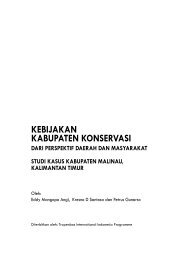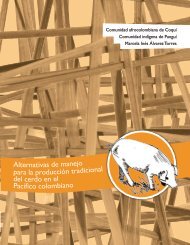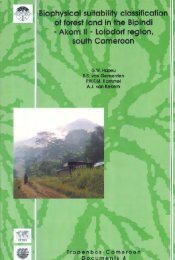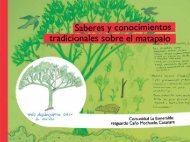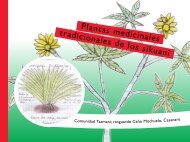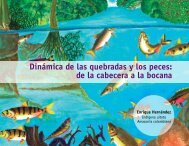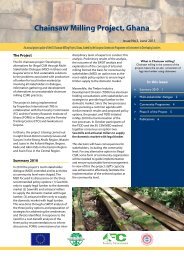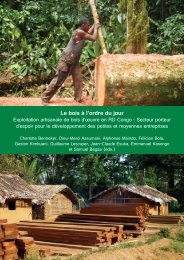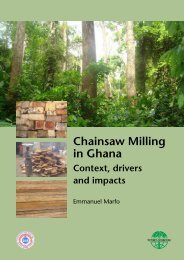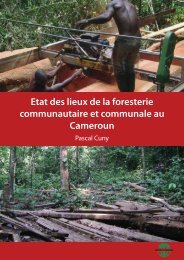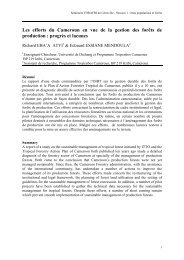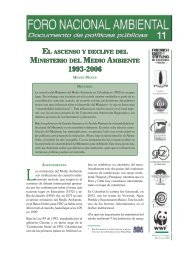Download the publication - Tropenbos International
Download the publication - Tropenbos International
Download the publication - Tropenbos International
You also want an ePaper? Increase the reach of your titles
YUMPU automatically turns print PDFs into web optimized ePapers that Google loves.
Bio-indicator species and Central African rain forest refuges<br />
Diameter class distribution of Aucoumea klaineana (Okoumé)<br />
As shown in Table 4.3 and Figure 4.9, <strong>the</strong>re was a significant difference between <strong>the</strong><br />
number of Okoumé stems/ha recorded in <strong>the</strong> Ma’an (270 stems/ha) and<br />
Ebianemeyong forests (1855 stems/ha). The diameter distribution pattern of<br />
Okoumé stems was similar in <strong>the</strong> two communities, with each community showing a<br />
reversed-J curve with a typical reduction of Okoumé stem frequency with increasing<br />
size classes (Figure 4.9). However, this curve was very sharp in <strong>the</strong> Okoumé<br />
community found on exposed hill slopes around Ebianemeyong because many stems<br />
were recorded below 10 cm DBH (more than 35%), few stems in <strong>the</strong> large and<br />
medium sized classes, and no stems above 80 cm DBH. In <strong>the</strong> Ma’an community,<br />
<strong>the</strong>re was also a gradual reduction of stems within <strong>the</strong> various DBH classes, but<br />
about 30 large Okoumé trees were recorded with a diameter above 100 cm (in 0.2<br />
ha).<br />
Table 4.3 Summary of <strong>the</strong> number of species, number of stems/ha, mean basal area/ha, and <strong>the</strong> number<br />
of Okoumé stems/ha recorded in 2 plots of 0.1 ha each in <strong>the</strong> Ma’an forest close to <strong>the</strong> border<br />
with Equatorial Guinea and on exposed hill slopes around Ebianemeyong in <strong>the</strong> Campo-Ma’an<br />
National Park (Figure 4.10).<br />
Location of <strong>the</strong><br />
Okoumé forest<br />
No of<br />
species<br />
No of<br />
stems/ha<br />
Mean<br />
basal<br />
area/ha<br />
Okoumé<br />
DBH<br />
range<br />
(cm)<br />
No of<br />
Okoumé<br />
stems/ha<br />
Contribution of Okoumé<br />
from <strong>the</strong> total number of<br />
individuals recorded in 0.2<br />
ha.<br />
Ebianemeyong 62 3925 41.3 1-80 1855 43.7%<br />
(371 out of 785 recorded)<br />
Ma’an 154 5615 73.6 1-175 270 4.8%<br />
(54 out of 1123 recorded)<br />
Note that in <strong>the</strong> Ma’an area, <strong>the</strong> Okoumé community was found in <strong>the</strong> mixed evergreen and semideciduous<br />
forest at altitudes between 400 to 500 m, while in <strong>the</strong> Ebianemeyong area, <strong>the</strong>y were mostly<br />
found in <strong>the</strong> Caesalpinioideae forest on exposed hill slopes between 600 to 700 m.<br />
69



